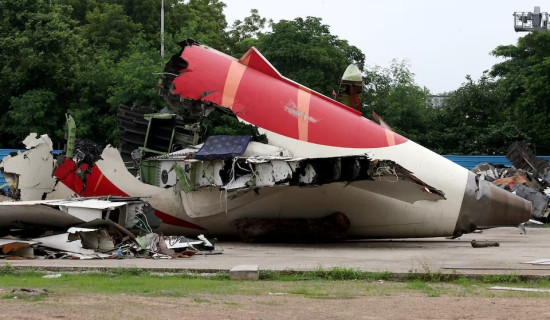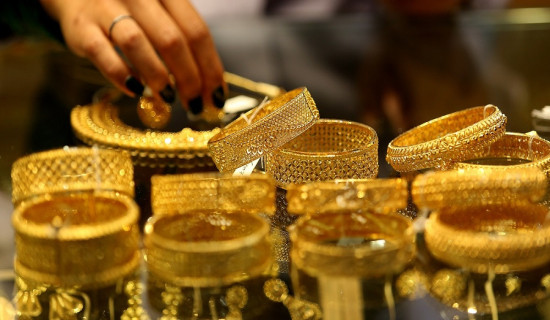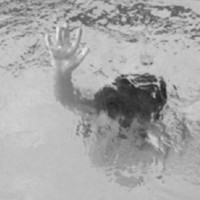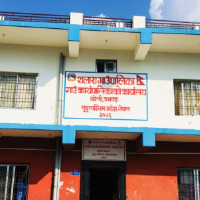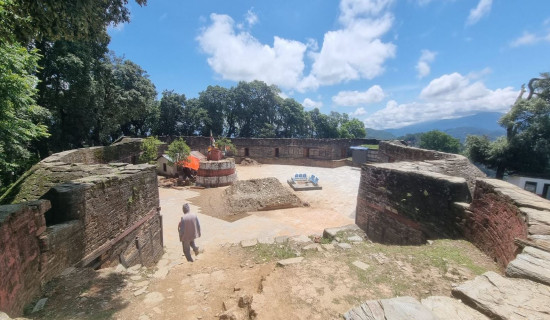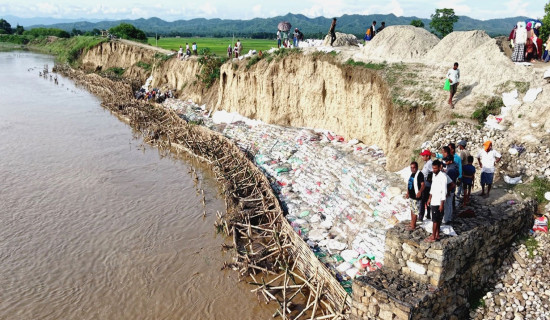- Wednesday, 16 July 2025
Excavation works begin in Dadeldhura's Ajaymerukot
By Puskar Bhandari,Dadeldhura, Feb. 22: For the first time, a team from the Department of Archaeology (DoA) has begun excavations in the main palace area of Ajaymerukot in Dadeldhura.
Inscriptions have been discovered in eight different locations within Ajaymerukot, including Dewal, Mandapam and Naula.
According to these inscriptions, records of King Niraya Pal from Sake Sambat 1250 (1420 B.S.) and King Nag Malla from Sake 1306 (1441 B.S.) have been found, said Bhaskar Gyawali, the DoA's Chief Archaeological Officer.
According to him, King Nagi Malla reigned in 1238 while King Nag Malla ruled in 1384, leading to a historical discrepancy of about 150 years. As a result, no evidence of King Nagi Malla has been found in this region. Only the records of Niraya Pal and Nag Malla have been discovered.
The records show that the region was an important centre of the Katyur dynasty, said Gyawali. He said that, at that time, the capital of Uttarakhand was Joshimath. Later, the capital was shifted to the Barba area. During the reign of King Niranjan Pal in the Doti Kingdom, the Ajaymerukot area was developed into a capital.
The antiquity and origin of the name Ajaymerukot is not yet clear. People believe that this palace was named Ajaymerukot because it was built by King Ajay Pal. However, there is no record of a king or ruler named Ajay Pal in the history of the Katyuri Dynasty or the Doteli Kingdom.
Further research and study were needed to uncover the facts, said Gyawali. Ajaymeru perched atop a mountain is surrounded by a river on three sides, making access possible only from one side. Ajaymeru seems to derive its name from its unique geographical position, with Ajay meaning invincible and 'Meru' meaning Mountain.
According to him, when examining the historical significance of Ajaymerukot, it was under the rule of the Katyur dynasty, which is now part of the Indian state of Uttarakhand.
Katyur dynasty ruled from the 7th to the 12th century, with its founder, Basudeva, who established the dynasty in the 7th century. By the beginning of the 12th century, the downfall of the Katyuri dynasty began, and it collapsed during the reign of Trilok Pal at the end of the 12th century.
Following the fall of the Katyuri dynasty, the kingdom was divided into eight parts. In the same period, the Doti kingdom was established.
Meanwhile, before the establishment of the Doti kingdom, historical records mention a ruler from the Khari kingdom in the east, near Karnali, who moved westward and established a kingdom in Sinja, Jumla, in the 11th century. This event marked the foundation of the greater Nepal kingdom, he said.
Meanwhile, between the 12th and 13th centuries, this region was ruled by Kra Challa and Ashoka Challa. It was located in the middle of the Karnali region. Inscriptions of Kra Challa and Ashoka Challa have also been found in Baleshwar in Kumaon. Gyawali said that they also ruled the Kumaon region.
The Doti kingdom gained independence in the early 13th century, following the reign of the Katyur dynasty. The 1414 Dullu inscription of Prithvi Malla indicates that this region was under the rule of the Katyur dynasty. Ajaymerukot served as the capital from the 16th century onwards when it was ruled by Niranjan Pal, Nagi Malla, Ripu Malla, Niray Pal and Nag Malla.
During the reign of Akbar in the 16th Muslims attacked and destroyed this region. Since then, Ajaymerukot remained in ruins and the capital was subsequently established in Shilgadhi, Doti. Gyawali said that during the unification of Nepal in 1790, under the reign of Bahadur Shah, the region was annexed into Nepal.



